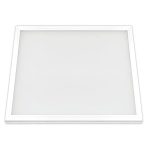Sleep Better: Discover the Best LED Light for a Restful Night’s Sleep
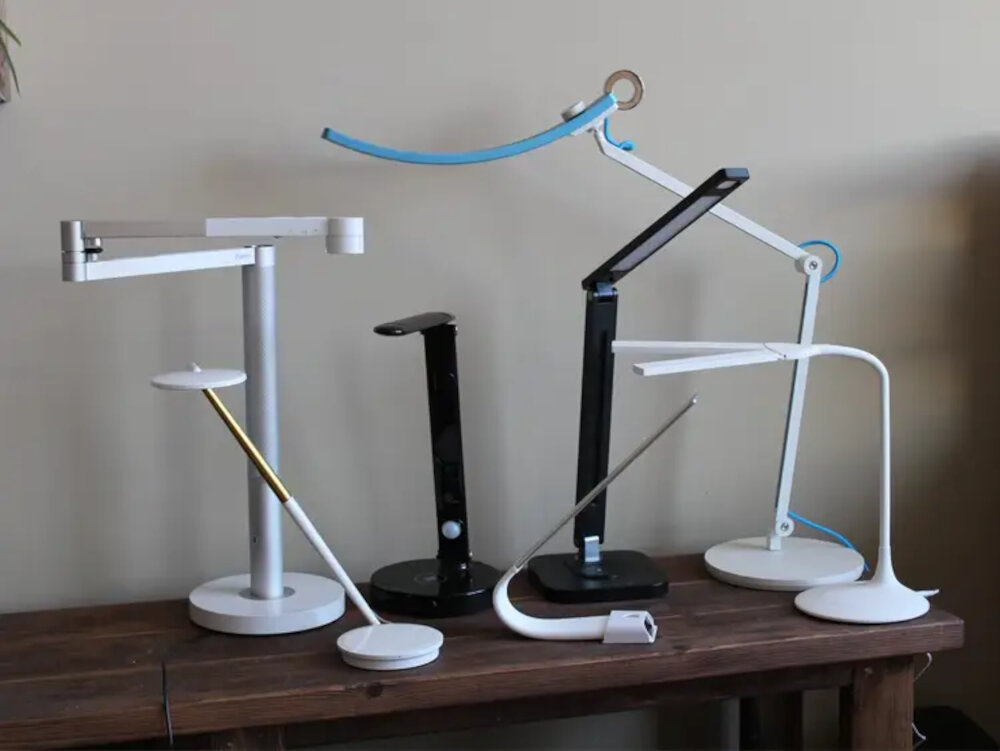
Getting a good night’s sleep is essential for overall health and well-being. However, with the increasing use of technology and artificial lighting, it can be challenging to get the restful sleep we need. One of the primary culprits disrupting our sleep patterns is the blue light emitted by LED light bulbs. Exposure to blue light can suppress the production of melatonin, a hormone that regulates our sleep-wake cycle. Fortunately, there are now LED light bulbs available that are designed to promote better sleep. In this article, we’ll explore the benefits of these special LED lights and help you discover the best option for a restful night’s sleep. LED lights have become increasingly popular in recent years due to their energy efficiency and long lifespan. However, not all LED lights are created equal. Standard LED bulbs emit a high amount of blue light, which can interfere with our natural sleep patterns. This is because blue light suppresses the production of melatonin, a hormone that helps regulate our sleep-wake cycle. The result is that exposure to blue light can make it harder to fall asleep and stay asleep, leading to a host of health problems. The good news is that there are now LED lights available that are designed to promote better sleep. By choosing the right LED light for your home, you can improve your sleep quality and wake up feeling refreshed and energized.
Understanding the Importance of Light for Sleep
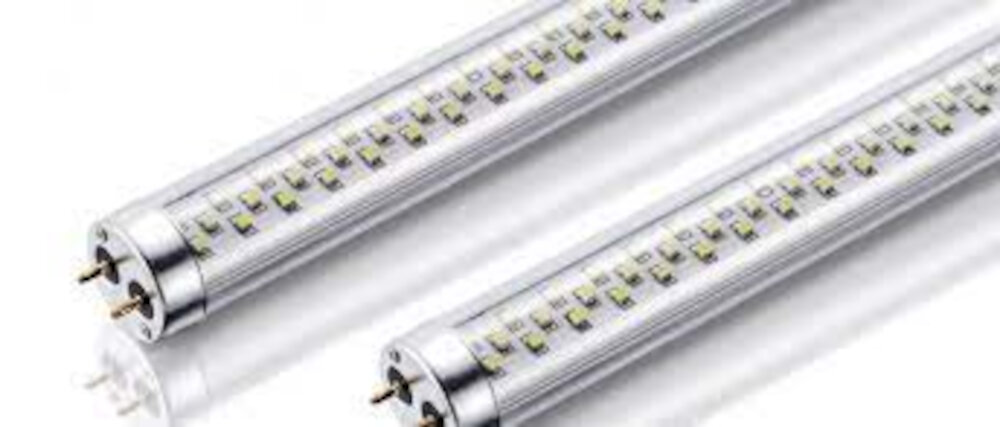
Light plays a crucial role in regulating our sleep-wake cycle. Exposure to light, especially blue light, can suppress the secretion of melatonin, a hormone that promotes sleepiness. This is because blue light suppresses the production of melatonin more than any other type of light. When we are exposed to blue light, our body thinks it’s daytime and reduces the production of melatonin, making it harder to fall asleep. This is why it is important to limit our exposure to blue light, especially in the evening when we are getting ready to sleep. On the other hand, exposure to dim light or warm light in the evening can promote the production of melatonin, making it easier to fall asleep. This is because dim light or warm light does not suppress the production of melatonin as much as blue light does. So, it is important to choose the right type of light for a restful night’s sleep. LED lights with adjustable color temperature and brightness can help create an optimal sleep environment. By selecting warm and dim light in the evening and gradually increasing the light intensity in the morning, we can maintain a healthy sleep-wake cycle and improve our overall sleep quality.
Light plays a crucial role in regulating our sleep patterns, as it directly affects our circadian rhythm. Exposure to bright light in the evening can suppress the production of melatonin, a hormone that induces sleep, and delay the onset of sleep. Similarly, exposure to blue light emitted from electronic devices such as smartphones, tablets, and laptops can suppress melatonin production and disrupt sleep. On the other hand, exposure to dim and warm light in the evening can enhance melatonin production and promote relaxation, leading to better sleep quality. Therefore, choosing the right type of LED light with the appropriate color temperature and brightness is essential for creating a sleep-conducive environment and improving overall sleep quality.
Circadian rhythm is a natural biological process that helps regulate the body’s sleep-wake cycle. This internal clock is influenced by external factors such as light and temperature and is responsible for making us feel alert or sleepy at different times of the day. Disruptions to this rhythm can lead to sleep disorders, such as insomnia or sleep apnea, and can have negative effects on our physical and mental health. The use of LED lights with warm colors or low blue light emission can help regulate circadian rhythm and promote a restful night’s sleep. By mimicking natural light and avoiding the stimulating effects of blue light, these lights can create a calming atmosphere in the bedroom, making it easier to fall asleep and stay asleep throughout the night.
Blue light, which is emitted by electronic devices such as smartphones, tablets, and computers, has been shown to have a negative impact on sleep quality. Exposure to blue light in the evening can suppress the production of melatonin, a hormone that regulates sleep-wake cycles. This means that individuals who spend a lot of time on their electronic devices before bed may have difficulty falling asleep and staying asleep. However, there are ways to mitigate the impact of blue light on sleep. One effective strategy is to use LED lights that have a warmer, more yellowish hue, as these emit less blue light and are therefore less likely to disrupt melatonin production. By making simple changes to our lighting environment, we can improve the quality of our sleep and wake up feeling more rested and refreshed.
Types of LED Lights for Better Sleep
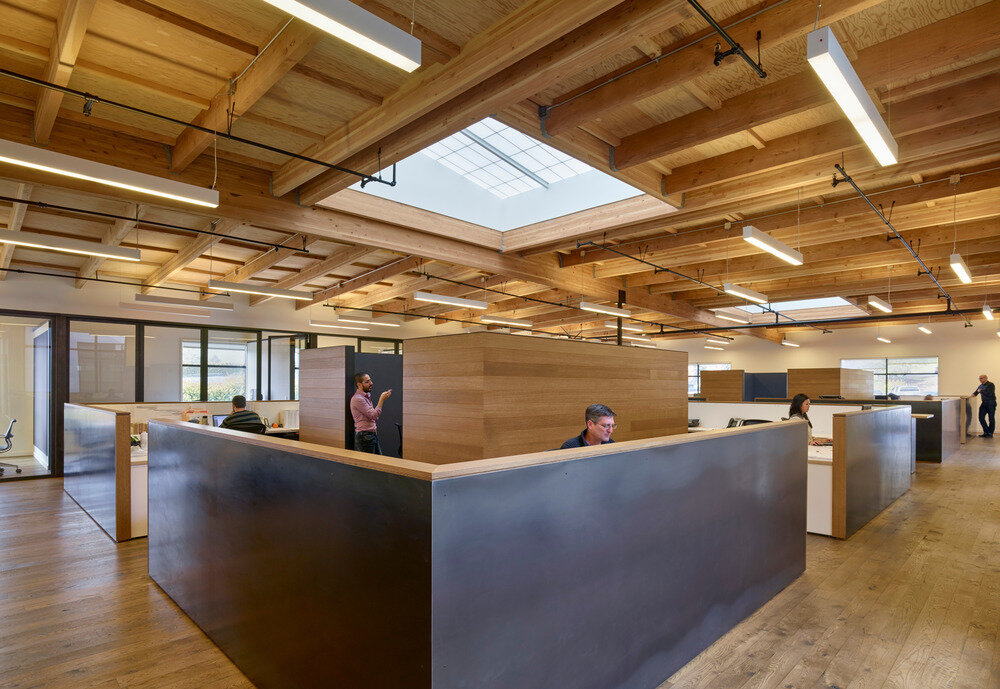
The type of LED lights you use in your bedroom can have a significant impact on the quality of your sleep. One of the most popular options for sleep-friendly lighting is warm white LED lights. These produce a soft, yellowish glow that mimics the light of a relaxing sunset. Warm white LED lights are known to reduce the production of melatonin, a hormone that regulates sleep and wakefulness. This makes them an excellent choice for creating a calm and relaxing atmosphere in your bedroom. Another type of LED light that promotes better sleep is the amber LED light. These emit a warm, amber-colored glow that has a calming effect on the body. Amber LED lights are believed to help regulate the body’s internal clock by triggering the production of melatonin. They also filter out blue light, which is known to suppress melatonin production and disrupt sleep. Amber LED lights are an excellent choice for creating a cozy and intimate atmosphere in your bedroom, and they are particularly useful for those who suffer from insomnia or other sleep disorders.
Warm white LED lights emit a soft, yellowish glow that creates a calming and relaxing atmosphere in any room. These lights have a color temperature range of 2700K to 3000K, which simulates the warm and cozy feeling of a sunset. They are an excellent choice for bedrooms, as they promote melatonin production, which is essential for a restful night’s sleep. Unlike cool white LED lights, which emit a blue-tinted light that can disrupt circadian rhythms, warm white LED lights provide a soothing environment that promotes relaxation and reduces stress. With their energy efficiency and long lifespan, warm white LED lights are an excellent investment for anyone looking to improve their sleep quality.
Amber LED lights are becoming increasingly popular as a way to promote healthy sleep habits. These lights emit a warm, soothing glow that helps to reduce blue light exposure, which has been linked to disrupting circadian rhythms and interfering with the body’s natural sleep-wake cycle. By using amber LED lights in the bedroom, you can create a relaxing environment that encourages restful sleep. In addition, amber lights are energy-efficient and long-lasting, making them a cost-effective and environmentally-friendly choice for your home. Whether you’re trying to improve your sleep quality or simply want to create a cozy atmosphere in your bedroom, amber LED lights are a great option to consider.
Red LED lights can play a significant role in improving the quality of your sleep. Unlike other colors, red light does not suppress the production of melatonin, which is a hormone responsible for regulating sleep-wake cycles. In fact, red light exposure at night can increase melatonin production and promote a more restful sleep. Additionally, red light is less stimulating to the brain and can help you feel more relaxed and calm, making it easier to fall asleep. Consider using red LED lights in your bedroom to create a soothing and peaceful environment that will help you achieve a better night’s sleep.
Factors to Consider When Choosing LED Lights for Sleep
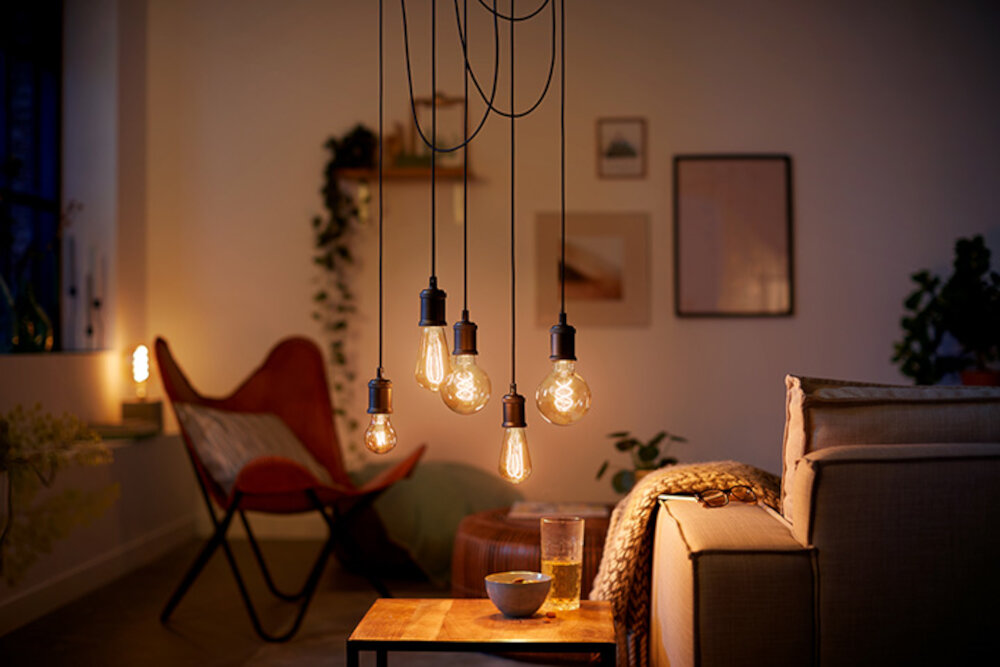
Choosing the right LED lights for sleep can be a challenging task, but it is crucial for ensuring a restful night’s sleep. There are several factors to consider when selecting LED lights for sleep, including color temperature, brightness, and lighting fixtures. Color temperature is one of the most important factors to consider when choosing LED lights for sleep. Studies have shown that blue light, which is often emitted by LED lights with a high color temperature, can negatively impact sleep quality. Therefore, it is recommended to choose LED lights with a color temperature of 2700K to 3000K, which emit a warm white light that promotes relaxation and calmness. Brightness is another crucial factor to consider when selecting LED lights for sleep. The brightness of the LED lights should be dim enough to promote relaxation and sleep, but not so dim that it becomes difficult to see or navigate the room. It is recommended to choose LED lights with a brightness level of around 200-300 lumens for a restful night’s sleep. Additionally, it is essential to consider the lighting fixtures used with LED lights. Soft, diffused lighting fixtures like lampshades or frosted bulbs are ideal for sleep as they create a cozy and relaxing atmosphere. Overall, selecting the right LED lights for sleep can significantly improve sleep quality and help you wake up feeling refreshed and energized.
Brightness and intensity are two crucial factors to consider when selecting an LED light for a restful night’s sleep. Brightness refers to the amount of light emitted from the bulb, while intensity is the strength of the light. It’s important to choose a bulb with the appropriate brightness level for your needs, as excessive brightness can disrupt your sleep cycle and make it difficult to fall asleep. On the other hand, a bulb with low intensity may not provide enough light for your activities, causing eye strain and discomfort. Therefore, finding the right balance between brightness and intensity is key to creating a relaxing environment that promotes restful sleep.
Color temperature refers to the hue of a light source and is measured in degrees Kelvin (K). It ranges from warm, yellowish tones (around 2000K) to cool, bluish-white tones (around 6500K). During the day, exposure to blue light can help regulate our circadian rhythm and keep us alert. However, exposure to blue light at night can disrupt our sleep patterns and make it harder to fall asleep. Choosing LED lights with a warmer color temperature (around 2700K) can help promote relaxation and better sleep. Additionally, some LED lights offer adjustable color temperatures, allowing you to customize your lighting for different times of day and activities.
Dimmability is a crucial factor to consider when selecting LED lights for better sleep. The ability to adjust the light intensity allows you to create a calming ambiance that encourages relaxation and drowsiness. Dimming the lights before bedtime can signal to your body that it’s time to rest, helping to regulate your circadian rhythm and improve the quality of your sleep. Moreover, dimming the lights can reduce the amount of blue light emitted, which can suppress the production of the sleep hormone melatonin. Therefore, choosing LED lights with dimming capabilities can be a game-changer in promoting a restful night’s sleep.
Light distribution is an essential aspect to consider when selecting the best LED light for a restful night’s sleep. The way light is dispersed within a room can affect both the quantity and quality of sleep. Harsh overhead lighting can be disruptive, whereas dim or diffused lighting can create a more comfortable and relaxing environment. Furthermore, the color temperature of the light can have a significant impact on sleep. Blue light, in particular, should be avoided during the evening hours as it can suppress the production of melatonin, the hormone that regulates sleep. By selecting an LED light with appropriate light distribution and color temperature, individuals can create a calming atmosphere that promotes restful and rejuvenating sleep.
Smart features are becoming increasingly popular in LED lights, particularly those designed for use in bedrooms. These features include adjustable color temperature and brightness, as well as programmable timers and remote control options. Some LED lights even incorporate sleep-enhancing features like built-in soundscapes and aromatherapy capabilities. The ability to customize your lighting experience to suit your specific needs and preferences can have a significant impact on your sleep quality and overall well-being. With so many smart features available, it’s easier than ever to find an LED light that will help you achieve a restful night’s sleep.
Top LED Lights for Sleep
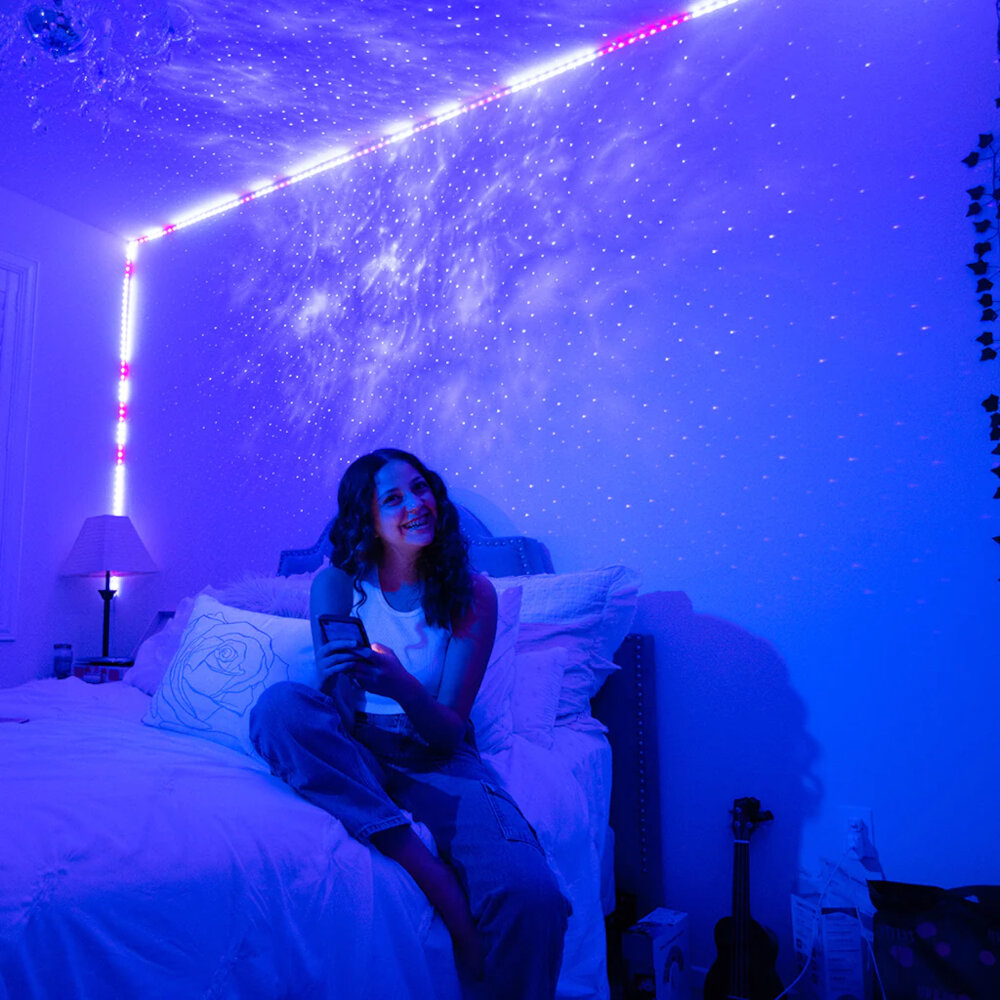
Light plays an essential role in regulating our body’s circadian rhythms, which are responsible for regulating our sleep-wake cycles. However, exposure to certain types of light, particularly blue light, can disrupt these rhythms and interfere with our ability to fall asleep and stay asleep. Fortunately, there are several top LED lights for sleep that can help promote a restful night’s sleep. One of the best LED lights for sleep is the Philips Hue White Ambiance. This smart light bulb allows you to customize the color temperature of your light to match your body’s natural circadian rhythms. You can set the bulb to emit warm, relaxing light in the evening to help you wind down and prepare for sleep, and then gradually transition to brighter, cooler light in the morning to help you wake up feeling refreshed and alert. Additionally, the bulb can be controlled with a smartphone app or a voice assistant, making it easy to adjust your lighting from the comfort of your bed.
The Philips Hue White and Color Ambiance Starter Kit is an impressive LED light system that provides a range of colors and brightness levels to suit any mood or setting. This starter kit comes with three smart bulbs that can be controlled using a smartphone app, voice commands, or a remote control. The Philips Hue White and Color Ambiance Starter Kit can be set to a warm, relaxing color temperature that’s perfect for winding down before bed. Additionally, the system features a \wind down\ routine that gradually fades the lights to a dim setting over 30 minutes, signaling to your body that it’s time to sleep. This feature can help you establish a healthy sleep routine and improve your overall sleep quality. The Philips Hue White and Color Ambiance Starter Kit is an excellent choice for anyone looking to enhance their sleep environment with customizable, high-quality lighting.
The GE Align PM LED Bulb is a game-changer in the world of LED lighting. It boasts of an innovative technology that provides the perfect lighting solution for a restful night’s sleep. The bulb emits a warm and calming light that helps to regulate the body’s natural circadian rhythm. Unlike regular LED bulbs that emit blue light, which interferes with the production of melatonin, the Align PM LED Bulb emits a soothing amber light that promotes relaxation and sleep. It is a perfect fit for anyone who struggles with falling asleep or staying asleep. The GE Align PM LED Bulb is energy-efficient, long-lasting, and easy to install, making it a great investment for a good night’s sleep.
The Lighting Science GoodNight Sleep Bulb is the perfect solution for those struggling with sleep problems. With a special technology that eliminates blue light, this LED bulb helps promote the production of melatonin, the hormone that regulates sleep cycles. The bulb is also designed with a warm and calming color temperature, which helps to create a relaxing atmosphere in the bedroom. By using the Lighting Science GoodNight Sleep Bulb, you can expect to fall asleep faster, stay asleep longer, and wake up feeling more refreshed and energized in the morning. Overall, this innovative LED bulb is a game-changer for anyone looking to improve their sleep quality and overall health.
The Flux Smart WiFi LED Light Bulb is one of the most innovative and practical LED light bulbs available in the market today. It offers a wide range of features and functions that are designed to provide the user with a restful and peaceful night’s sleep. The bulb is equipped with a variety of smart features such as adjustable brightness, color temperature, and a timer function that allows the user to set the bulb to turn off automatically after a certain amount of time. The Flux Smart WiFi LED Light Bulb can also be controlled remotely with a mobile app, making it easy to adjust the settings from anywhere in the house. With its energy-saving capabilities and advanced features, this LED light bulb is an excellent choice for anyone who wants to improve their sleep quality and overall well-being.
The importance of choosing the right LED light for sleep cannot be overstated. The wrong type of light can disrupt our circadian rhythm, making it difficult to fall asleep and stay asleep. The blue light emitted by many LED bulbs, in particular, can suppress the production of melatonin, a hormone that plays a crucial role in regulating our sleep-wake cycle. In contrast, warmer, red-toned LED lights can promote relaxation and help us wind down before bed. By selecting the right LED light, we can create an environment that is conducive to restful sleep, allowing us to wake up feeling refreshed and rejuvenated.
In conclusion, finding the right LED light for sleep can make a significant difference in the quality of our rest. Based on our research, we recommend the Philips Hue White and Color Ambiance Smart Light Bulb as the top pick due to its customizable settings, dimming capabilities, and ability to sync with our natural sleep cycle. However, other options such as the Hatch Restore and the SleepScore Max Sleep Improvement System also offer unique features to promote relaxation and better sleep. Ultimately, it is important to consider personal preferences and individual needs when selecting a LED light for sleep. Experimenting with different light temperatures, brightness levels, and timing can help us find the best LED light to support our sleep hygiene and overall well-being.
Conclusion
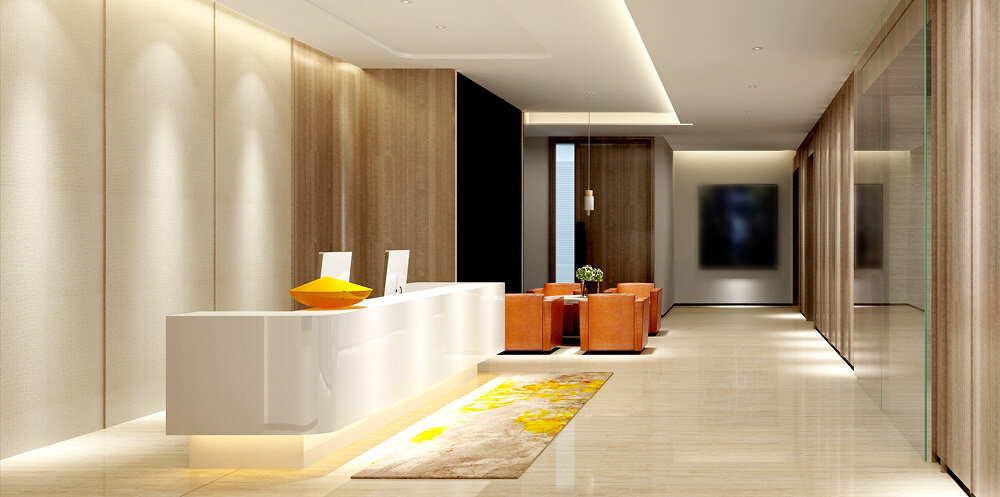
In conclusion, investing in the right LED light can significantly improve the quality of your sleep and ultimately, your overall well-being. By choosing a light with a warm hue and low blue light output, you can create a calming environment that promotes relaxation and drowsiness. Additionally, features such as dimming and color temperature adjustment can further enhance your sleep routine. So, take the time to research and invest in a high-quality LED light that is specifically designed to promote restful sleep, and start enjoying deeper, more restorative slumber.

